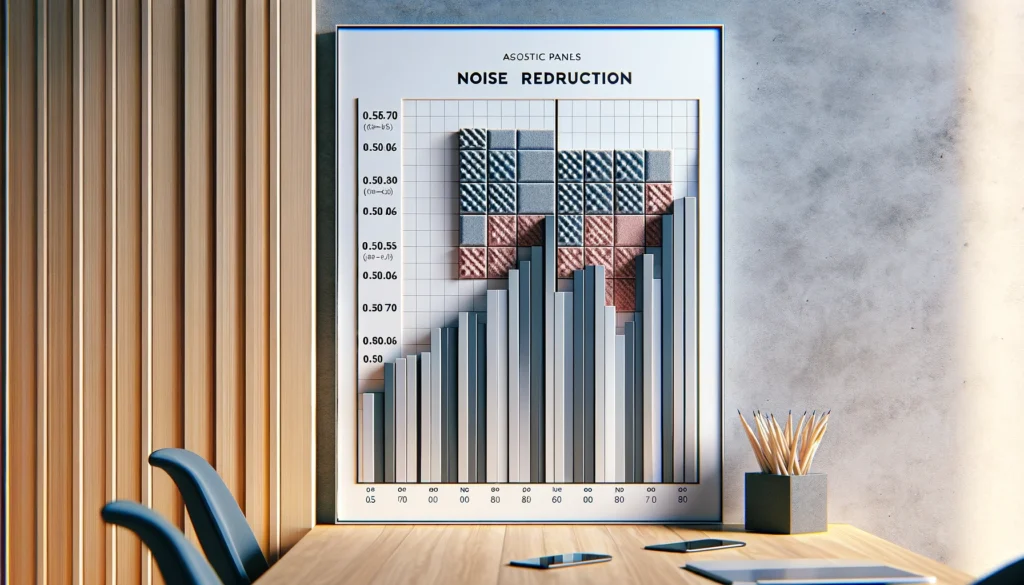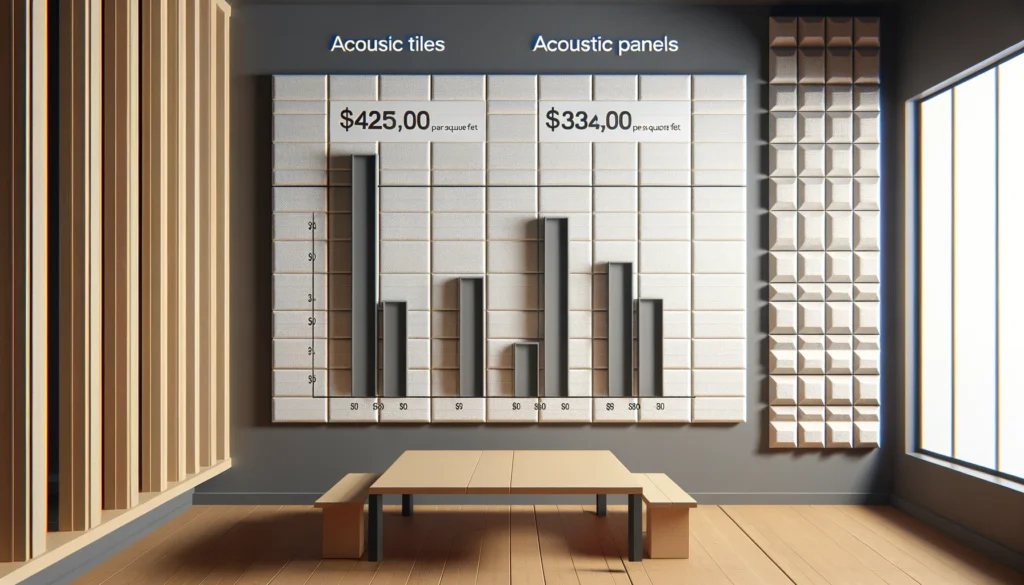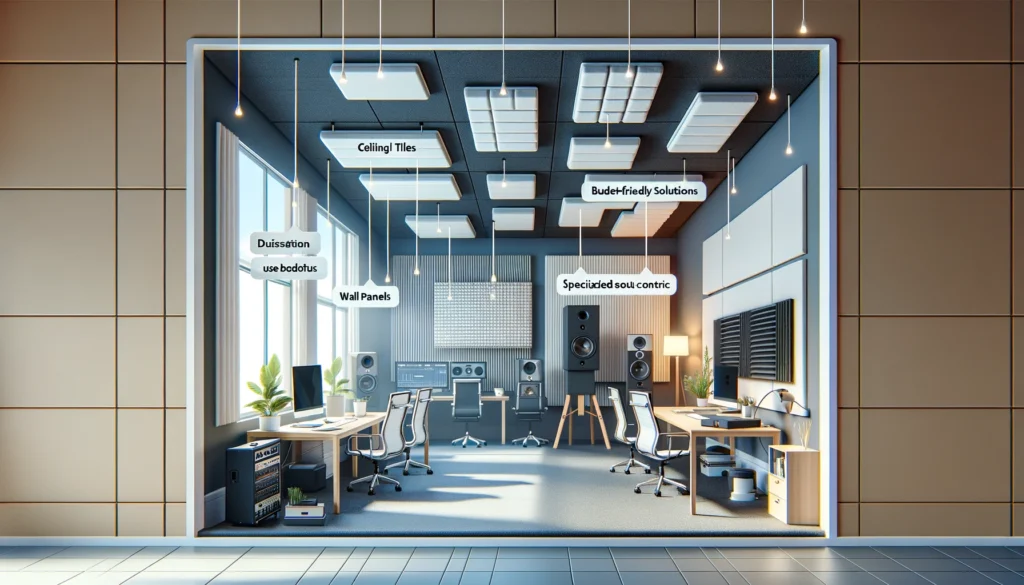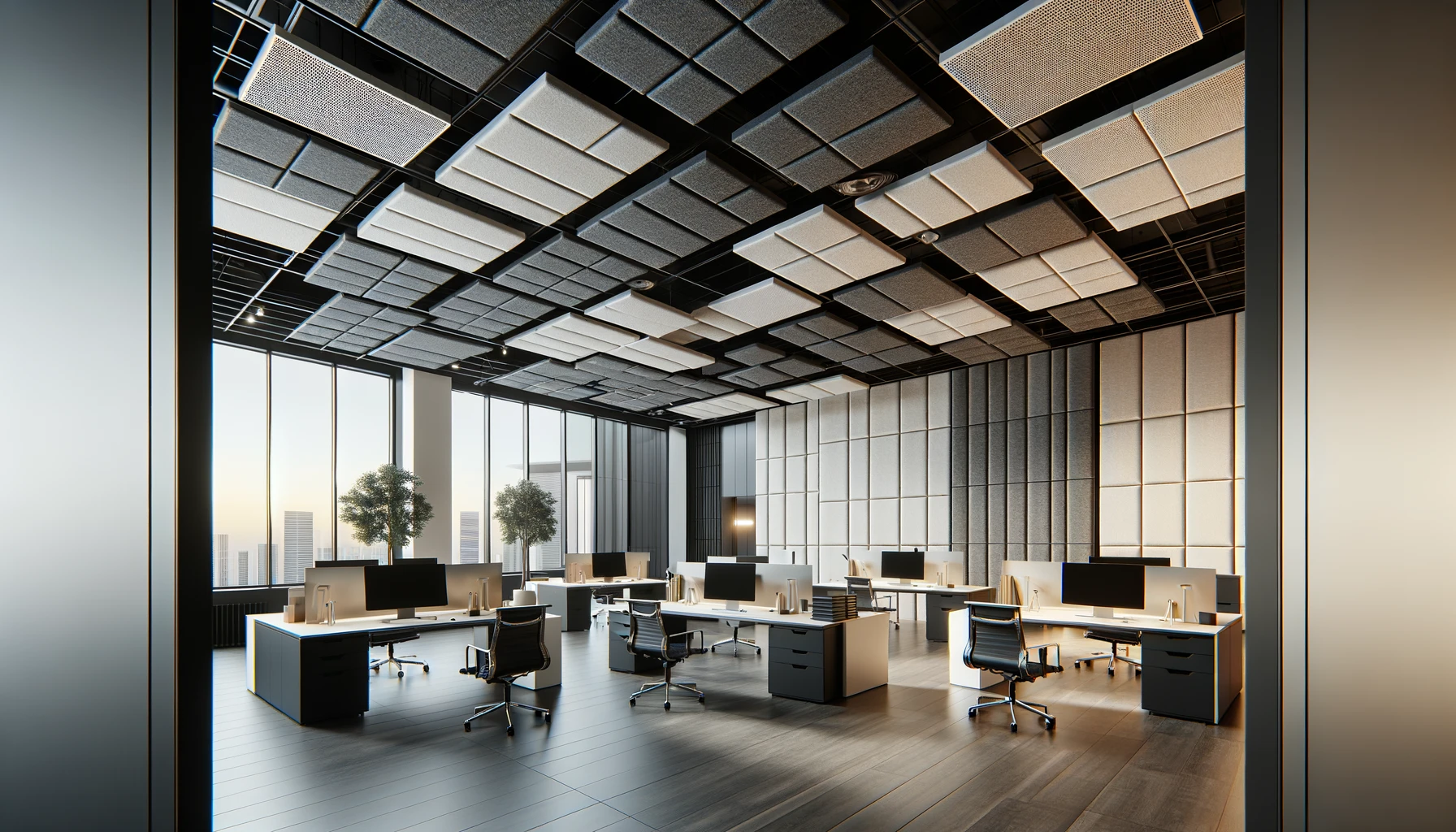Have you ever wondered if those drop-in ceiling tiles actually absorb sound well? Acoustic panels claim superior noise reduction, but are costly.
We compare the real-world effectiveness and value of acoustic ceiling tiles versus wall panels.
While performance differs, both play roles in practical sound absorption.
Let’s dive in to learn the details…
Are Acoustic Tiles as Effective as Acoustic Panels?
In short, no – acoustic panels generally outperform ceiling tiles for noise control.
Their materials, density, placement, and customizability contribute to increased sound absorption.
But acoustic tiles do provide meaningful reverberation reduction economically.
We’ll explore the nuances below.
Noise Reduction Capabilities

Acoustic tiles and acoustic panels are both used to absorb sound and reduce noise, but panels are generally more effective at decreasing decibel levels.
Acoustic tiles are drop-in ceiling tiles usually made from mineral fiber or fiberglass and rated with a noise reduction coefficient (NRC) between 0.50-0.70 typically.
This means they can absorb 50-70 percent of the sound that hits their surface.
Acoustic panels, on the other hand, are mounted on walls and ceilings and made from denser materials like foam or wool, allowing them to achieve higher NRC ratings in the 0.80-1.00 range.
With their increased density and placement on room boundaries where sound waves are most reflective, acoustic panels can absorb up to 100 percent of incident sound energy.
The material composition and positioning of panels allows them to mitigate noise in a space better than acoustic tiles.
However, tiles can still help reduce echoes and reverberation to an extent by adding sound-diffusing surfaces to a room.
They just don’t offer the same level of high-performance acoustic treatment that panels provide through superior wave absorption and strategic mounting.
Installation and Placement

Installing acoustic tiles involves dropping them into an existing or new ceiling grid, while mounting panels requires more customization and labor.
Ceiling tiles designed for acoustic performance easily substitute for standard tiles in most grid systems.
Panels usually affix right to wall and ceiling surfaces using adhesives or mechanical fasteners.
Some can mount directly over drywall or plaster, while others may need furring strips installed first to create airspace behind them.
Permanent installation like this raises the complexity level over simply laying tiles into a ceiling grid.
With tiles, placement is confined to the ceiling plane with less flexibility to target specific noise issues coming from certain parts of the room.
Their performance is consistency limited across the whole ceiling.
Because panels can adhere to both walls and ceilings, they allow for more strategic localization based on noise sources and reflective surfaces.
Angled wall panels, corner traps, diffusers placed at first reflection points, and absorptive clouds above noise hot spots are some configuration options.
This thoughtful placement enables panels to effectively absorb sound, managing both broadband noise and problematic reflections that tiles on a ceiling cannot.
Aesthetics

When installed in a standard suspended grid, acoustic ceiling tiles look clean and seamless.
They blend in for a subtle aesthetic matching other ceiling tiles, doing their job to absorb sound without making a significant visual impact.
Acoustic panels come in a wider range of materials, shapes, sizes, thicknesses and colors.
Companies offer customized printing and fabric wrapping as well to coordinate panels with surrounding décor.
This enables panels to not only provide noise control, but also make a design statement if desired.
That said, some people prefer the uniform, understated look of matching tiles.
They don’t attract attention or alter the room’s appearance substantially.
Acoustic panels stand out more noticeably depending on their style, mounting location and quantity installed.
Tiles keep a lower profile visually while still absorbing some excess sound.
It ultimately comes down to room use and personal design taste when considering the aesthetics of the two products.
Panels allow for bolder visual choices and customization possibilities compared to tiles.
Cost Comparison

Due to their materials and easier installation, acoustic ceiling tiles generally cost less than acoustic wall and ceiling panels.
Basic 2’x2′ or 2’x4′ drop-in mineral fiber tiles usually run $15-25 per tile.
Acoustic wall panels range widely in price from $50 up beyond $200 per panel in some cases, varying based on size, thickness and material composition.
Considering these products on a cost per square foot basis helps compare their economic value.
Similar sound-absorbing fiberglass ceiling tiles and fabric-wrapped wall panels might cost around $3 per square foot and $20 per square foot respectively.
There is substantial price overlap though when factoring in panel size, materials and performance level.
Plus any labor expenses make panels a larger investment.
In terms of noise reduction value relative to price paid, properly positioned acoustic panels outperform tiles pound for pound.
But budget plays a role in determining which product makes more economic sense for a given application.
Ideal Applications

For areas like basement finishing, office spaces or commercial buildings where ceiling access is available and budget is a main concern, acoustic drop-in tiles present an affordable noise solution.
Contractors and building owners work with standard grid layouts for simplicity and cost savings.
Panels become harder to justify from a budget standpoint without access above a drywall ceiling.
The fact that tiles require minimal installation also caters to limited disruption.
Music studios, media rooms, performing arts spaces and other specialized interiors often utilize acoustic wall and ceiling panels over tiles.
When designing explicitly for sound quality, the additional performance and installation flexibility justifies the added cost.
Strategic panel placement targeting focal points and first reflection paths manages noise and echoes that unchecked ceiling tiles cannot.
For upscale residential media rooms where aesthetics are also paramount, customized panels make sense.
With premium acoustic and design demands less price sensitive, panels emerge as the product of choice.
In summary, easy-to-install acoustic ceiling tiles suit more basic commercial needs and budget-driven projects with drop ceilings readily available.
When higher noise reduction, specialized design and customizable placement are needed despite added costs, targeted acoustic wall and ceiling panels prove most effective.
Weighing factors like performance requirements, construction constraints, disruption, economics and aesthetics determines which approach best fits the space.
Conclusion
Acoustic panels outperform ceiling tiles in noise absorption capabilities with their advanced materials, density levels and mounting on multiple surfaces.
Tiles offer value through affordable pricing, simplified installation and subtle aesthetics.
Evaluating a room’s needs regarding noise control, construction access, costs and design style indicates which acoustic treatment works best.
For targeted sound absorption tailored to application-specific demands in the environment, acoustic panels usually provide ideal performance.
But acoustic ceiling tiles serve reliably as a scalable first step for improving background noise issues economically.
